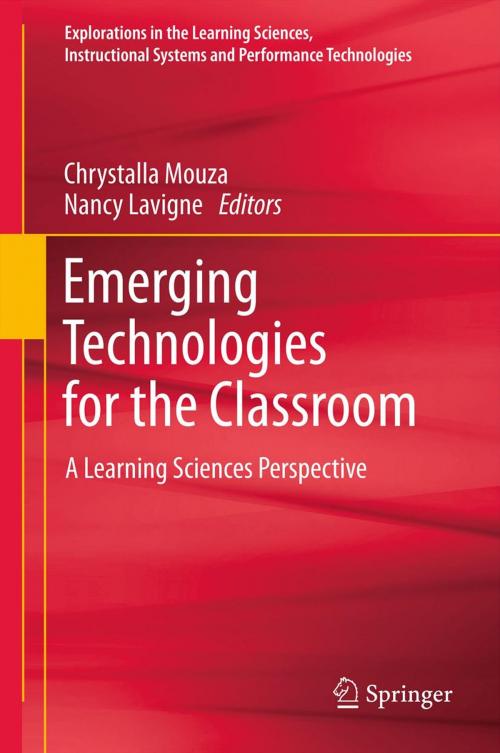Emerging Technologies for the Classroom
A Learning Sciences Perspective
Nonfiction, Reference & Language, Education & Teaching, Teaching, Computers & Technology, Health & Well Being, Psychology, Developmental Psychology| Author: | ISBN: | 9781461446965 | |
| Publisher: | Springer New York | Publication: | November 7, 2012 |
| Imprint: | Springer | Language: | English |
| Author: | |
| ISBN: | 9781461446965 |
| Publisher: | Springer New York |
| Publication: | November 7, 2012 |
| Imprint: | Springer |
| Language: | English |
This book provides contemporary examples of the ways in which educators can use digital technologies to create effective learning environments that support improved learning and instruction. These examples are guided by multiple conceptual and methodological traditions evolving from the learning sciences and instructional technology communities as well as other communities doing important work on learning technologies. In particular, the book provides examples of technology innovations and the ways in which educators can use them to foster deep understanding, collaboration, creativity, invention, and reflection. Additional examples demonstrate the ways in which emerging mobile and networked technologies can help extend student learning beyond the confines of the classroom wall and support student-directed learning and new media literacies.
This book provides contemporary examples of the ways in which educators can use digital technologies to create effective learning environments that support improved learning and instruction. These examples are guided by multiple conceptual and methodological traditions evolving from the learning sciences and instructional technology communities as well as other communities doing important work on learning technologies. In particular, the book provides examples of technology innovations and the ways in which educators can use them to foster deep understanding, collaboration, creativity, invention, and reflection. Additional examples demonstrate the ways in which emerging mobile and networked technologies can help extend student learning beyond the confines of the classroom wall and support student-directed learning and new media literacies.















